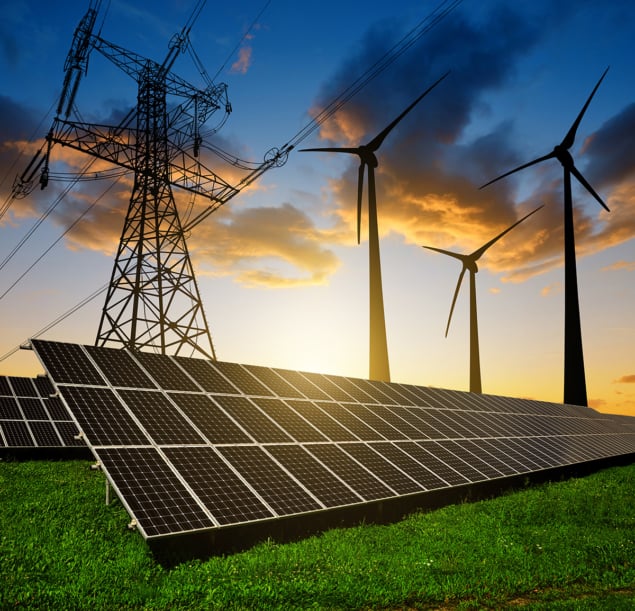
The World Renewable Energy Congress (WREC) is a long running bi-annual gathering of academics and practitioners, linked via the World Renewable Energy Network (WREN). Although based in the UK, its bi-annual sessions, and other regular sub-gatherings, take place all over the world. This year, however, for its 18th session, WREC returned — for a second time — to Kingston University in suburban Surrey. Big hitters included David Renné, president of the International Solar Energy Society, who offered an inspiring overview of pathways to 100% renewable energy, and Rainer Hinrichs-Rahlwes, vice-president, European Renewable Energies Federation (EREF), and board member of the German Renewable Energy Federation (BEE), looking critically at Europe’s 2030 targets: the EU is trying, he said, but needs to do better.
Controversially, WREN director Donald Swift-Hook argued that energy storage was mostly irrelevant
Dave Elliott
Wherever it’s held, WREC always attracts significant international participation, including from Africa, with this year a range of technical papers presented, e.g. on mini-grids and rural electrification. At the more general policy level, my Open University colleague Terry Cook and I relayed some ideas from our new book, Renewable Energy – From Europe to Africa, focussing on the impact of market-based private investment approaches to renewable development in Africa. The new “trade not aid” approach being adopted by the EU aims to stimulate private sector investment to create new markets, something that China was already good at, although often with less emphasis on the social and environmental aspects.
Big in Japan?
There were also several good presentations on developments in Asia, including one on the state of play with offshore wind in Japan. It was reported that there were or had been ten projects, 40 MW in all, incorporating some 2 MW floating systems and some now at 5 and 7 MW. But though the potential was very large (hundreds of GW for both offshore and on-shore wind), there were problems with developing wind power in Japan. It has cumbersome environmental impact assessment (EIA) procedures that can take four years, and three separate regional electricity supply bodies in the east and six in the west, making grid integration of outputs from on-shore wind, which is mainly in the north, hard. Floating offshore projects might, however, circumvent some of the bureaucratic issues and supply power direct to load centres like Tokyo.
Integration is clearly an increasingly important issue, with storage being part of that. Controversially, WREN director Donald Swift-Hook argued that energy storage was mostly irrelevant — and that renewables were best seen as direct (fossil) fuel savers. So, if they were available, and especially at increasingly low cost, then just use them. Other times, use gas! Turning surplus renewables into gas (PtG) would evidently be too expensive. So post-generation storage of renewable outputs was basically not needed or viable in Swift-Hook’s eyes: “Commercial storage of energy on a power system works by arbitrage, buying cheap electricity [typically in the middle of the night] and selling it when electricity is dear [during the day-time or evening]. If fuel-saving renewables are stored, the round-trip losses from putting their electricity into store and taking it out again wastes some of the fuel already saved. There is no difference in fuel costs around the clock, so storing electricity from renewable fuel savers cannot be arbitraged or commercially justified.”
To store or not to store
Reinhard Haas from the energy economics group at the Technical University of Vienna also looked at the storage issue, in the context of dealing with surplus outputs from renewables, and their short- and long-term variations. Batteries were OK for short-term balancing, and they reduced the strain on the grid. But pumped hydro was needed for longer term storage, though its cost would rise as new sites became scarce. However, Power to Gas (PtG hydrogen/methane) would get cheaper. But there are diminishing returns — each storage success makes it less economically attractive to store more. Or as Haas put it: “Every additional storage unit makes this one and every other less cost-effective”. That’s the so-called “principle of self-cannibalism in energy economics”, which, as far as I can see, means that the cheaper anything gets the less profit can be made from going for more of it. But that’s surely only if the market remains the same size — if it’s expanding, so will the opportunity to make profits from meeting it. However, Haas says that, while local batteries might do well for short-term storage, “in a dynamic market framework the costs of all centralized long-term storage technologies will finally be too high to become competitive”, and he sees competition with demand-response options and demand-side management challenging storage as well.

The long goodbye to fossil fuel: what’s the best strategy for renewable energy?
So, decentralised batteries apart, the final conclusion from Haas is quite grim, almost as grim as Swift-Hook’s: “with respect to all centralized long-term storage technologies, the future perspectives will be much less promising than currently indicated in several papers: new long term hydro storages will not become economically attractive in the next decades [and] for PtG-technologies it will become very hard to compete in electricity markets, despite a high technological learning potential”. Though Haas does say that, “for hydrogen and methane there might be prospects in the transport sector”.
Focus on solar
There were, as ever, many papers on specific technical and operational issues and developments (over 170 in all), with the PV solar field heavily represented, including a paper from Oman, on the impacts of dust, and a nice historical paper on the use of PV by the US Vanguard satellite. A lot to take in, but with some overall very positive messages. For example, it was suggested that PV may surpass 1 TW globally by 2022. It was also suggested that new luminescent wavelength down‐shifting materials could boost PV productivity significantly. That would make PV more valuable in less sunny areas — the paper on that came from Ireland. Arguably, it might then be clearly even more preferable to biomass in land-use terms. It was claimed that, given the low energy conversion efficiency of bio-photosynthesis compared to PV cells, PV could already generate 40-80 times more power output per acre than biomass crops. Of course, the difference would be less if it was biomass waste that was being used, an issue also well covered at WREC. However, overall PV does seem to be romping ahead in many areas, both at the large and small scale, with, for example, PV being used in refugee camps and in Afghanistan’s reconstruction, and hybrid PV-thermal playing a role in desalination.
WREC was held in the midst of the sweltering UK summer and there were some timely papers on cooling and ventilation. These included, significantly, some from China, where this is becoming a major issue for the rapidly-growing more affluent urban population. Much of the Middle East and Africa also has increasing air-con demand and this will rise everywhere as climate change progresses. Fortunately, some new technologies are emerging that may help, including systems using high-heat-capacity phase-changing materials. As some papers from the UAE noted, these can also be used with Concentrating Solar Power systems. So maybe high temperatures are not always a problem — although I still would not like to be trapped on the 100th floor of a Dubai high-rise when and if the currently still mostly fossil-derived power supply fails, and there are no lifts or air con… But it was good to hear that some progress is being made on greening buildings and power in the UAE.
However, as everywhere, there is a lot more to do. As Ali Sayigh, the indefatigable chair of WREC, put it, “many countries in the world are now embracing renewable energy not only because it is clean and cost effective but also because it reduces energy imports and creates local jobs…Now it is up to you, the participants in this Congress, to continue to spread and develop all forms of renewable energy, and to commit yourselves to the very urgent reduction of the climate change effect”.
- Key papers will be published by Springer/WREN in due course.



